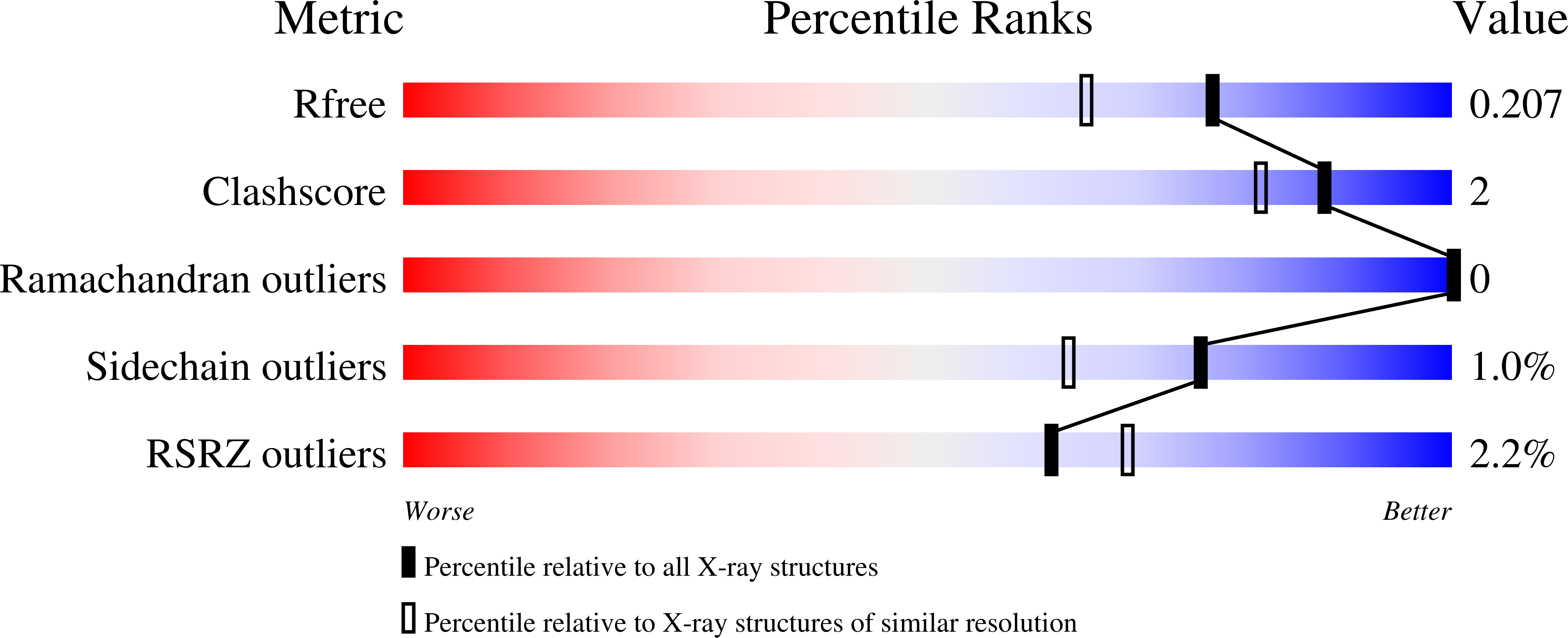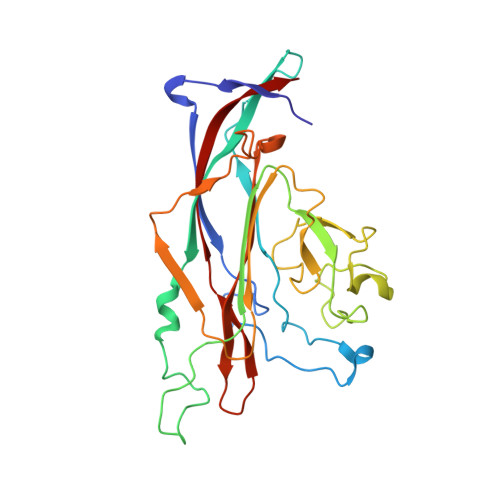Divalent Sialylated Precision Glycooligomers Binding to Polyomaviruses and the Effect of Different Linkers.
Baier, M., Rustmeier, N.H., Harr, J., Cyrus, N., Reiss, G.J., Grafmuller, A., Blaum, B.S., Stehle, T., Hartmann, L.(2019) Macromol Biosci 19: e1800426-e1800426
- PubMed: 30884172
- DOI: https://doi.org/10.1002/mabi.201800426
- Primary Citation of Related Structures:
6HKU, 6HKV - PubMed Abstract:
Divalent precision glycooligomers terminating in N-acetylneuraminic acid (Neu5Ac) or 3'-sialyllactose (3'-SL) with varying linkers between scaffold and the glycan portions are synthesized via solid phase synthesis for co-crystallization studies with the sialic acid-binding major capsid protein VP1 of human Trichodysplasia spinulosa-associated Polyomavirus. High-resolution crystal structures of complexes demonstrate that the compounds bind to VP1 depending on the favorable combination of carbohydrate ligand and linker. It is found that artificial linkers can replace portions of natural carbohydrate linkers as long as they meet certain requirements such as size or flexibility to optimize contact area between ligand and receptor binding sites. The obtained results will influence the design of future high affinity ligands based on the structures presented here, and they can serve as a blueprint to develop multivalent glycooligomers as inhibitors of viral adhesion.
Organizational Affiliation:
Institute of Organic and Macromolecular Chemistry, Heinrich-Heine-University Duesseldorf, Universitaetsstrasse 1, 40225, Duesseldorf, Germany.


















